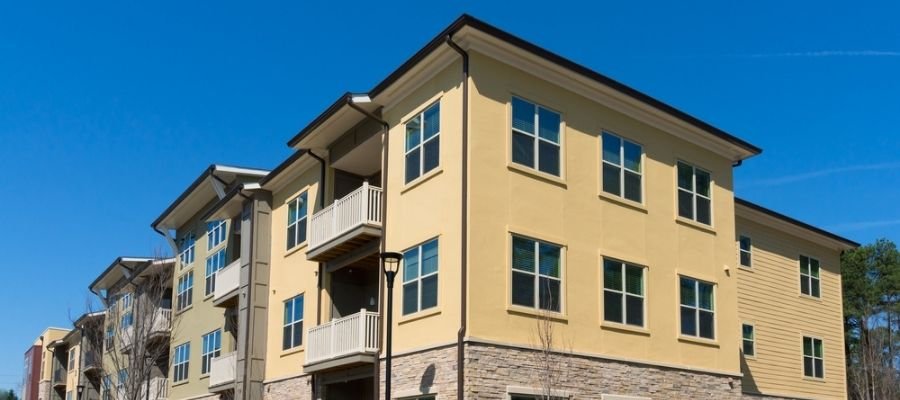Realstate
Everything You Need To Know About Balcony Inspections In Florida
Balcony Inspections In Florida

Living in Florida means enjoying warm weather, beautiful beaches, and stunning views. Many homes and apartments in the sunshine state feature balconies, providing residents with a place to relax and take in the scenery.
However, it’s essential to remember that balconies require proper maintenance and inspections to ensure safety.
In this comprehensive guide, we will cover everything you need to know about balcony inspections in Florida. This will include the importance of inspections, building codes and regulations, types of inspections, hiring professional inspectors, common balcony issues in Florida, and steps to take after an inspection.
Why Are Balcony Inspections Important?
Balcony inspections are crucial to ensure the safety of residents and visitors.
Over time, balconies may deteriorate due to weather conditions, wear and tear, and inadequate maintenance.
Regular inspections help identify any structural issues, cracks, or rotten materials, preventing accidents and potential injuries.
Furthermore, proper inspections can help property owners identify potential problems before they become severe, saving them from costly repairs down the line.
Building Codes and Regulations for Balconies in Florida
Florida has specific building codes and regulations that address the construction and maintenance of balconies. This includes the DBPR HR-7020 requirements from the Division of Hotels and Restaurants.
These regulations are set forth by the Florida Building Code and cover areas such as minimum balcony dimensions, load-bearing capacities, railing heights, and material requirements.
It is essential for property owners and tenants to be familiar with these codes to ensure compliance and safety. Violations of these codes can result in fines and penalties, and in extreme cases, the closure of the balcony until the necessary repairs or modifications are made.
Types of Balcony Inspections
There are various types of balcony inspections that should be conducted periodically to maintain safety standards.
These inspections can include visual assessments, structural assessments, and material integrity assessments.
Visual inspections involve checking for any visible signs of damage or deterioration, such as cracks, loose railings, or uneven surfaces.
Structural assessments go deeper, examining load-bearing capacity and overall structural integrity.
Material integrity assessments, at the same time, focus on the state of balcony materials and their resistance to weathering.
Inspection Frequency and Key Considerations
The frequency of balcony inspections depends on factors such as the type of material used, age of the balcony, and climate conditions.
Generally, it is recommended to conduct inspections annually or bi-annually. However, if there are any visible signs of damage or concerns, it is crucial to schedule an inspection promptly, regardless of the recommended time frame.
Additionally, balconies in coastal areas or places prone to extreme weather conditions may require more frequent inspections.
Hiring a Professional Balcony Inspector
It is highly recommended to hire a professional balcony inspector to ensure a thorough assessment. Look for inspectors who specialize in building inspections, adhere to the DBPR HR-7020 requirements, and have experience inspecting balconies.
A qualified inspector will have the necessary knowledge and tools to identify potential issues accurately and provide expert recommendations for repairs or maintenance.
When hiring an inspector, check their qualifications, certifications, and previous experience. It is also advisable to request references and reviews from previous clients to ensure you are hiring a reputable and reliable professional.
Common Balcony Issues in Florida
In Florida, certain balcony issues tend to be more prevalent due to the climate and exposure to elements. These issues include water damage, pest infestation, rusting of metal structures, and deterioration of wooden components.
The humidity and frequent rains in Florida can lead to moisture accumulation on balconies, causing wood rot, mold growth, and structural weakening.
Additionally, Florida’s warm climate attracts pests, including termites, which can damage wooden balconies. Regular inspections can help detect these issues early and prevent further damage.
Steps to Take After a Balcony Inspection
After a balcony inspection, it is important to take appropriate action based on the inspector’s recommendations. This may include repairs, replacements, or maintenance tasks.
Depending on the severity of the issues identified, it might be necessary to engage a contractor or specialized professional to fix structural problems or replace damaged materials.
It is crucial to address any identified issues promptly to maintain the safety and longevity of the balcony. Regular maintenance practices, such as cleaning, sealing, and painting, can also help extend the life of the balcony and prevent future issues.
Conclusion
Balcony inspections are a vital part of maintaining safety and structural integrity in Florida homes and apartments.
By understanding the importance of inspections, knowing the relevant building codes, and hiring professional inspectors, property owners and tenants can ensure their balconies are safe for use.
Regular inspections, proactive maintenance, and prompt action on recommended repairs will contribute to the enjoyment and safety of these outdoor spaces for years to come.
Remember, safety should always be a priority when it comes to balcony inspections, as it can prevent accidents, injuries, and costly damage.
Table of Contents

-

 Business10 months ago
Business10 months agoSepatuindonesia.com | Best Online Store in Indonesia
-

 Technology6 months ago
Technology6 months agoTop High Paying Affiliate Programs
-

 Tech4 weeks ago
Tech4 weeks agoUnderstanding thejavasea.me Leaks Aio-TLP: A Comprehensive Guide
-

 Technology2 months ago
Technology2 months agoLeverage Background Removal Tools to Create Eye-catching Videos
-

 Tech10 months ago
Tech10 months agoAutomating Your Window Treatments: The Advantages of Auto Blinds
-

 Tech10 months ago
Tech10 months agoUnleash Your Potential: How Mecha Headsets Improve Productivity and Focus
-

 Instagram2 years ago
Instagram2 years agoFree Instagram Follower Without Login
-

 Instagram2 years ago
Instagram2 years agoFree Instagram Auto Follower Without Login



















